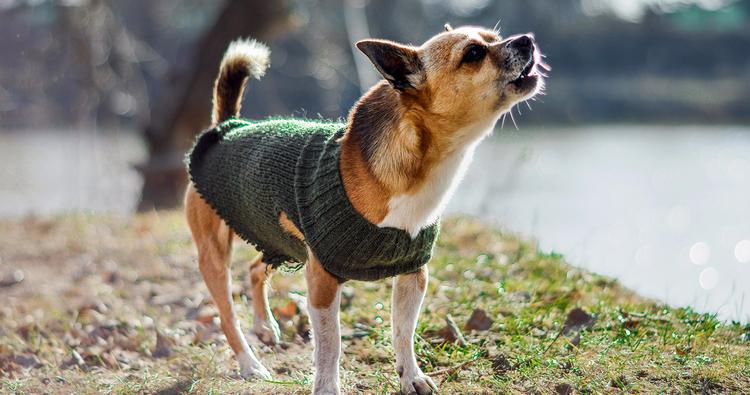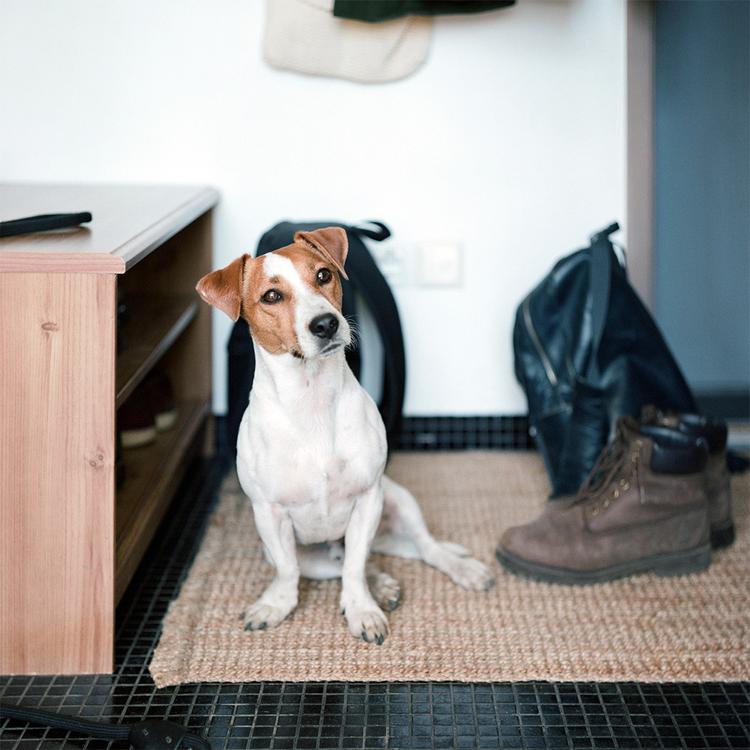by Adopt a Pet, | January 8, 2024

3Reasons / Alamy Stock Photo
The first step to calm an aggressive dog is understanding what triggers the aggression. It could be anything from pain to frustration or fear to redirected aggression. Just like some humans are more aggressive than others, the same is true for dogs — but one thing is true for all: No matter the size of the dog or the level of aggression, you must find effective ways to stop the behavior in order to protect your dog and the people and animals around him. While you work on finding a solution, keep your dog physically separated from any aggression triggers, other pets, children, and people until the issue can be addressed.
Reasons Dogs Are Aggressive
In the wild, aggression is necessary for dogs’ survival. An aggressive dog isn’t bad, but that behavior does need to be modified. If you can figure out the reason for your dog’s aggression, you’ll be better able to find a resolution. Some of the reasons for dog aggression include:
Protecting Themself or Their Pack – Some dogs are extremely protective of the other animals and humans in their pack. While this is good in some circumstances, some dogs become aggressive if anyone even approaches their humans.
Protecting His Den – Does your dog run along the fence line barking at passerby in a menacing way? Does the barking stop once the person is past your fence? That is your dog protecting his den. They’re not interested at all in the person — as long as that person moves along.
Protecting Their Food or Toys – Food aggression is common in dogs who didn’t get enough to eat at some point in their lives. A food-aggressive dog who is normally docile will turn into Cujo if anyone approaches them when they’re eating. This same type of possession aggression can also apply to favorite toys or beds.
Redirected Aggression – If a dog can’t reach the target of their aggression, for example a strange dog being walked on a leash, they may turn on whatever dog or human he can reach. This type of aggression often comes as a shock as the dog may attack a dog they have lived with peacefully for years.
Other reasons for redirected aggression include fear, predatory reasons, and sexual frustration. Another thing to keep in mind is that a normally docile dog who suddenly becomes aggressive could be in pain due to an undetected medical condition, so get your dog to the vet as soon as possible.
Once you figure out the reason for the aggression, you can begin to work with your vet or an animal behaviorist. It is important to note that if your dog displays low levels of aggression, like growling for example, correcting the behavior may lead to more aggressive behavior next time. This is because your dog realized they were punished for growling and could escalate to a more aggressive behavior in the future. Training can still be very helpful to work on mild aggression, but punishment may not be the solution.
Aggression is one of the top reasons pet owners rehome their dogs, but with the right intervention, you can put a stop to this behavior and keep your pet in your home.

Adopt a Pet
Related articles

Behavior & Training
How to Stop Dog Aggression
Behavior & Training
Can You Train An Aggressive Dog?

Behavior & Training
What Is the One-Bite Rule?

Behavior & Training
Will Neutering Calm an Aggressive Dog?

Behavior & Training
Why Is My Dog Being Aggressive All Of A Sudden?

Behavior & Training
Can An Aggressive Dog Be Rehabilitated?

Behavior & Training
How Do You Stop a Big Dog from Attacking a Little Dog?

Behavior & Training
Why Do Dogs Bite Their Pet Parents?

Behavior & Training
How to Get Your Dog to Stop Barking
If your dog won’t stop barking, don’t despair. There are several steps you can take to train your dog to quiet down.
Behavior & Training
How Do You Stop a Dog From Barking?

Behavior & Training
Are Bark Collars Cruel?

Behavior & Training
What is Nuisance Dog Barking?

Behavior & Training
What Is Considered Excessive Dog Barking?

Behavior & Training
Do Dogs Get Tired Of Barking?

Behavior & Training
Why Is My Dog Barking For No Reason?

Behavior & Training
Stop Your Dog’s Territorial Marking Inside
Learn effective methods to prevent and manage your dog